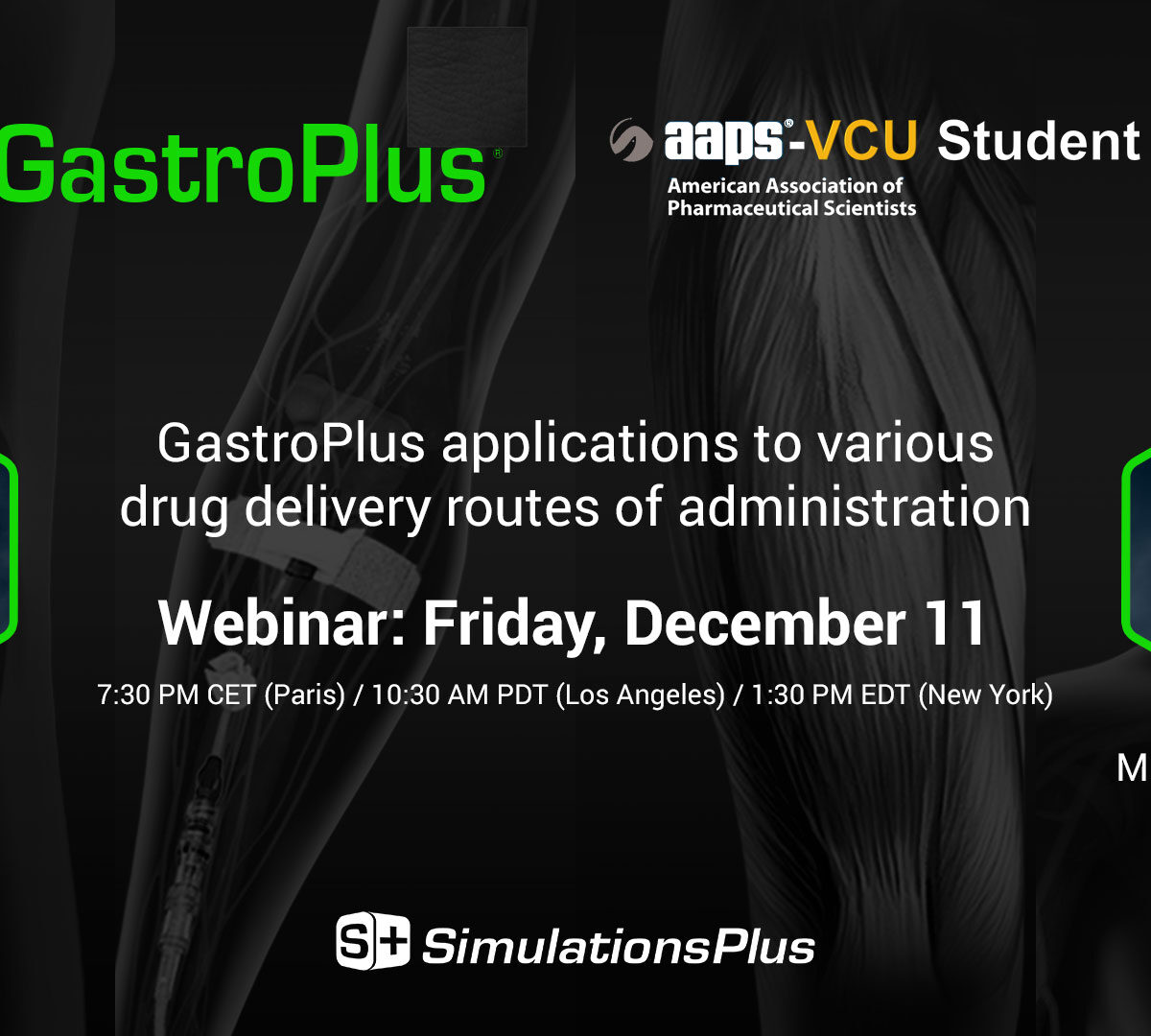IPFsym® is a mechanistic, mathematical model for QSP of idiopathic pulmonary fibrosis (IPF) that can be used to predict efficacy for potential treatments.

Culture & Conversation – The accelerator pedal for innovation…
The central idea behind the “learn and confirm” paradigm is to emphasize the learning part of R&D and then intelligently apply what has been learned to the design of clinical trials.

Best Practices for Membrane & Biphasic In Vitro Dissolution with DDDPlus™ & GastroPlus®
DDDPlus is a state-of-the-art simulation platform for in vitro dissolution.

Simulx Webinar: Optimizing Sample Size of a Phase III trial
What if we could reduce the size of a phase III study from 400 to 80 subjects and make it twice as short? Thanks to model-informed clinical trial design, it's possible!

NAFLDsym Application Showcase: Key Examples of NAFLDsym Use within Drug Development
NAFLDsym is a quantitative systems pharmacology (QSP) modeling software to support the development of treatments for non-alcoholic fatty liver disease (NAFLD) and nonalcoholic steatohepatitis (NASH).

DILIsym® Applications in Drug Development – Perspectives from 2 Pharma Industry Executives & an Experienced Consultant
What do NURTEC™ ODT, TURALIO®, lixivaptan, solithromycin, JYNARQUE®, VEKLURI®, and UBRELVY® have in common?

Modeling and Simulation of a parent-metabolite-PD datatset (Spring School challenge solution)
Whether you have participated to our Spring School and its modeling challenge or not, this webinar is for you!

Human-on-a-Chip combined with PBPK modeling for in vitro/in vivo PK/PD extrapolation
Human-on-a-Chip (HoaC) systems are becoming valuable tools to study, understand disease physiology, and expand the prediction of pharmacodynamic effects before first-in-human studies. They can also be used to evaluate the toxic effects of compounds in non-pharma industries where these effects cannot be examined in vivo.

Early assessment of PK properties using ADMET Predictor® HTPK Simulation Technology
Physiologically-based pharmacokinetic (PBPK) modeling, combined with in vitro and in vivo extrapolation (IVIVE) approaches...

AAPS Webinar: Translating manufacturing variants from in vitro to the clinic. Opportunities and gaps for IR formulations with additional IVIVC ‘Safe Space’ applications
Development of an in vitro/in vivo correlation (IVIVC) can be most challenging for immediate release (IR) products

New Library of Tumor Growth Inhibition Models in Monolix
Presentation of the models in the TGI library available in Monolix and Simulx

GastroPlus® v9.8.1 DDI Standards Update and Documentation Project
This webinar will be an introduction to the "GastroPlus DDI Standards Update" project.

IPFsym™, a platform to support the development of effective treatments for IPF patients
Patients with idiopathic pulmonary fibrosis (IPF) have a low survival prognosis and limited treatment options.

Strategic Implementation of Model-informed Drug Development (MIDD) for Regulatory Success
In honor of the International Day of Women and Girls in Science, she will also share and reflect on some of her early career experiences.

From Monolix to Simulx: how to explore new scenarios
In this webinar you will learn how to use Simulx with Monolix projects and you will discover features that bring the best insight from simulations.

QSP Modeling of Fibrosis in Liver, Lung, and Heart
DILIsym Services expert modelers Diane Longo, Grant Generaux, and Scott Q. Siler will describe the development and use of QSP...

GastroPlus® Applications to Various Drug Delivery Routes of Administration – AAPS-VCU Student Chapter
John DiBella, Maxime LeMerdy, and Cherylann Iagatta host an Introductory GastroPlus User Session for Academic Research

Setting up a simulation from scratch in Simulx
No matter how you have developed your population PK/PD or QSP model, Simulx-GUI is an intuitive, flexible and powerful application to simulate new situations and answer "what if" questions.

Relevance of Physiologically Based Biopharmaceutical Modeling (PBBM) in the Approval of Generic Products
The Webinar "Relevance of Physiologically Based Biopharmaceutical Modeling (PBBM) in the Approval of Generic Products", which will be presented in Spanish
